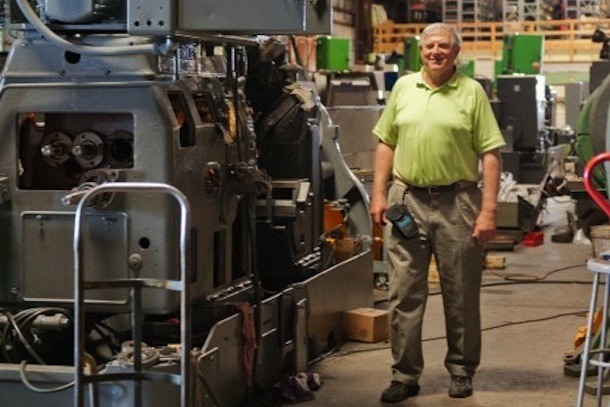I love the used machinery business because it is a competitive treasure hunt every day. It asks us for impossible calculations about realizable values for illiquid, flawed, sometimes rickety, filthy objects that often have little tangible worth when we are asked to buy them.
Here’s an example of the type of situation we consider at my company Graff-Pinkert every day. A firm has a 25-year-old screw machine or rotary transfer machine that it does not need at the moment. It has long been written off the financial statements, yet the potential seller feels it still has value but doesn’t know how much. He calls dealers for comps, checks eBay for similar machines, and considers whether he may use it again soon himself. He advertises it or calls us and probes for an offer. We feel the piece may have enough potential value that would make it a worthwhile addition to our stock, but we need to determine whether it is badly worn and will require substantial expensive refurbishing, or if it can be sold in its present state, which usually means full of oily chips, a nasty appearance, and out of production.
If by chance the machine shows well and is still running good parts, it becomes inviting for our broker competition, which hopes to turn it quickly for a modest but quick profit, without doing any of the difficult work of returning it to its original state of productivity.
Our challenge is to find machines that can be reclaimed from 25 years of factory abuse, refurbish them and reconfigure them to meet our client’s imminent need, and do it for a price that will be competitive and provide us with a profit that will keep the doors open. How do we do this nutty alchemy? It ain’t easy.
We deal with clients who approach business from a distinctly different angle than ourselves. They are engineers or shop folk who are obsessed with precision and repeatability. While we both pray to the same god of “return on investment,” my company is focused on one machine at a time, while they may be looking at the profit on a million pieces.
We are selling reliability, hand holding and an understanding of the capability of the machine, while our machinery broker competitors may be selling primarily on price.
Turned parts people are extremely price oriented. They deal in pennies per part and fractions of seconds of idle time, so every expenditure is weighed and reweighed for its impact on the bottom line.
For me a deal is an art form, an intellectual and artistic challenge to shape the price, terms, and other variables to meet the customer’s needs and wants, even if they are unspoken.
How do we make a profit?
Another “art form.”
Naturally, it is crucial to acquire “raw material” right. If you buy machines for stock like we do, you need to find machines that are not so horrible that they defy reclamation. You need skilled machinists and electricians to refurbish them. You need a cleaning crew to suck the swarf out and return them to their original beauty, and you must be skilled at scrounging for the new and used parts these old workhorses require to regain their mojo.
Over the years, we have acquired thousands of viable parts, accessories and attachments for the kinds of machines we sell. They have been stripped off machines or salvaged from the flotsam and jetsam of pillaged factories. Many days all the greasy iron looks like pennies a pound scrap to me, and then a Wickman buyer needs just the shaft we’ve held for a decade and it turns into gold in my eyes.
Banks and accountants struggle with how to account for our inventory of reclaimed, exquisite crud. “What is it worth?” they ask. “How long have you had it?” they inquire. “What did you pay for it?” they want to know.
When asked these logical questions by well-meaning, but uninitiated outsiders I have to stifle my penchant for sarcasm and flippancy. They are good questions for regular businesses with inventories not comprised of cannibalized Acmes, half attachments, and renegade Hydromat flanges.
The bankers and accountants study our net worth numbers each year coming up with a verdict on our success or failure. I struggle to contain my cynicism, annoyance, sometimes triumph. Profit, net-worth, margins and ratios are the stuff numbers people obsess about, and I care about those things, because as the owner and boss I need to. But where my love of the used machinery business truly stems from is the constant challenge to do the impossible. We turn iron into gold, and do it steadily enough to pay the bills each month.
Question: Are good used machines a better value than new machines?
